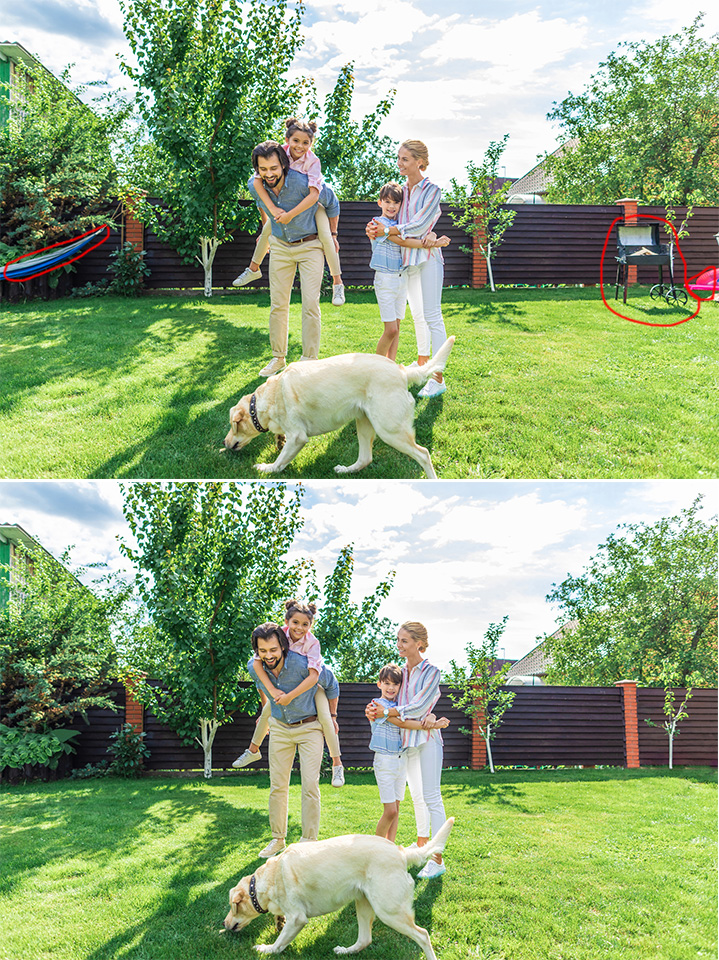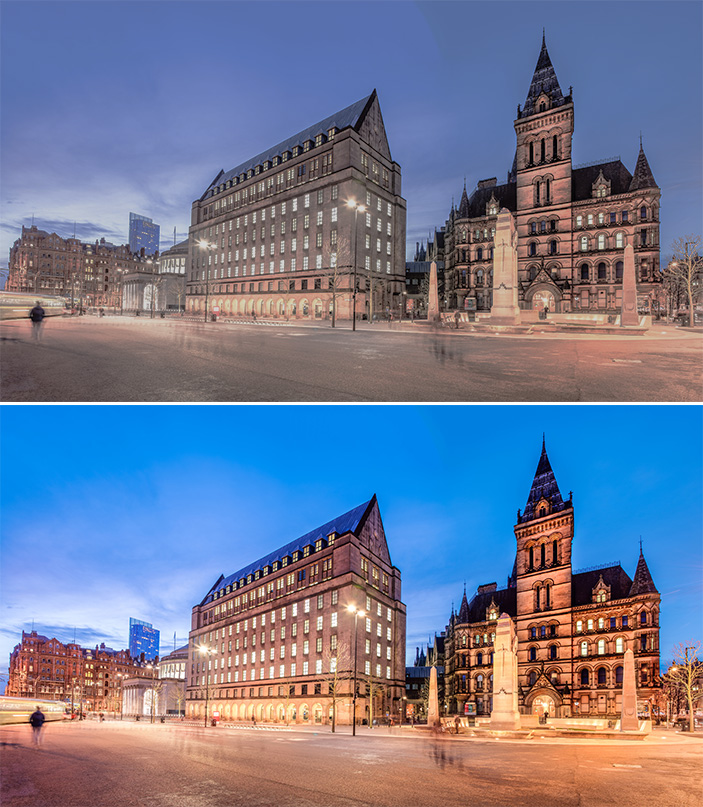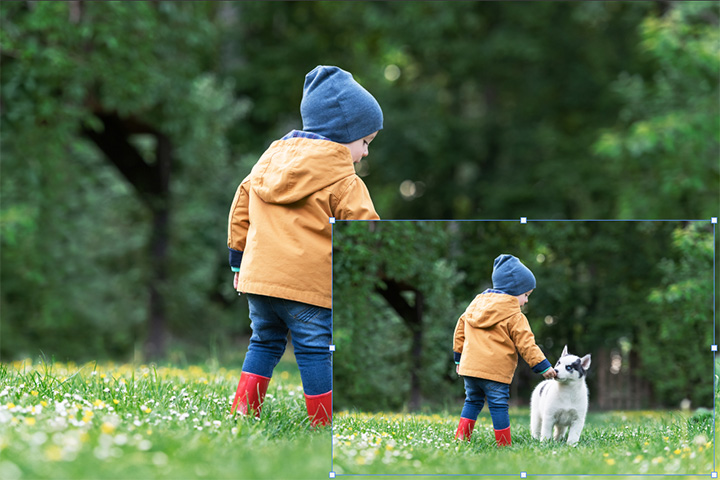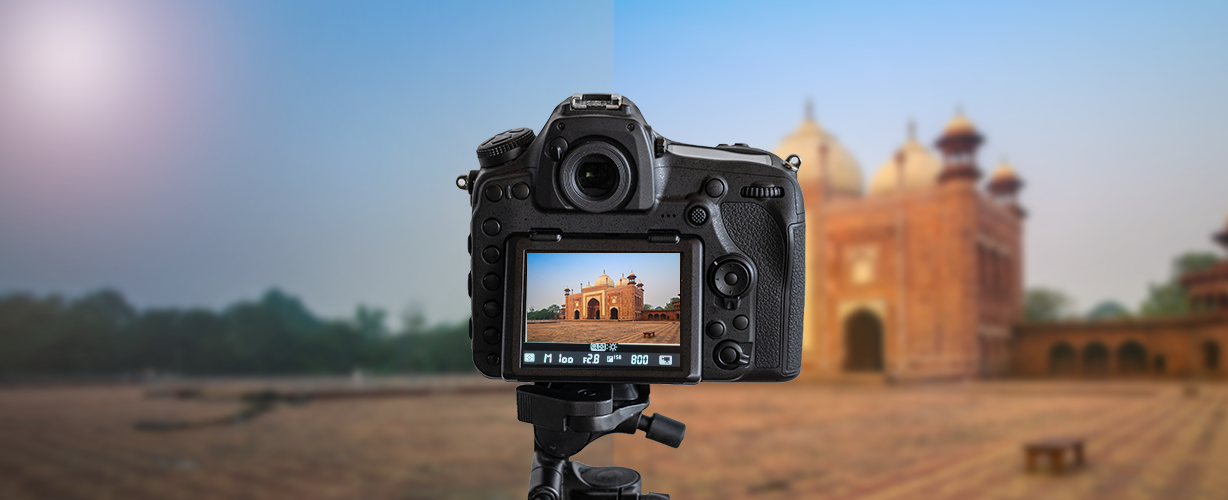Social media is a fun way for personal use. But, when it comes to promoting yourself, your portfolio, or your photography work through online social networks, the prospect can be downright scary. The bundle of questions then pop up – What social media platforms should be used? How to write a good post? Whether it’s working or not? The prospect of using social platforms like Facebook, Instagram, LinkedIn, and Twitter to market a photography business brings with it a barrage of challenges.
Getting started with social media marketing isn’t an easy overnight process—it involves a bit of learning to manage social platforms professionally and, more importantly, posting the required quality of content. Social media promotion backed by professional image clipping and photoshop services is a great tool for photographers to have a web presence by sharing work, creating more leads, and reaching out to potential clients.
What Social Platforms to Use for Maximum Reach?
Before you even get started on social media marketing, you’ll need to pick a platform. While new ones pop-up and old ones die out all the time, the biggest options for photographers are Facebook, Twitter, LinkedIn, Pinterest, and Instagram.
Don’t be tempted to open an account on all three platforms right away, though. It’s better to excel on one social media platform than to fall flat on your face with multiple platforms. Successful social media marketing requires a time commitment. Don’t open three accounts, then fail to gain followers because you don’t have the time, or worse, spend all your time on social media marketing with none left to actually take pictures.
To start with, pick one platform—you can add another later on when your initial account requires less time. Here are a few things to consider with each option:
 Facebook – This is a popular option because there are so many users. It’s also easy to upload many different types of posts, including images. It’s also easy to share images, so you’ll get more exposure. Facebook can be difficult to build followers, however, and not all of your followers see every post. Actually, if few people like the post, very few other users will actually see it.
Facebook – This is a popular option because there are so many users. It’s also easy to upload many different types of posts, including images. It’s also easy to share images, so you’ll get more exposure. Facebook can be difficult to build followers, however, and not all of your followers see every post. Actually, if few people like the post, very few other users will actually see it. Twitter – This is based on 140-character posts and isn’t as image-oriented as other outlets. However, you can still post images and quick updates. Unlike Facebook, posts aren’t displayed based on how many likes they get, but just chronologically. That means if you post often, your followers will see your posts frequently.
Twitter – This is based on 140-character posts and isn’t as image-oriented as other outlets. However, you can still post images and quick updates. Unlike Facebook, posts aren’t displayed based on how many likes they get, but just chronologically. That means if you post often, your followers will see your posts frequently. LinkedIn – This is one of the most underutilized social networks for photographers. It’s actually loaded with highly engaged individuals. Keep in mind that LinkedIn also has company pages, just like Facebook. Be sure to take advantage of them. A well-optimized LinkedIn profile can showcase photography skills and enhance your digital marketing strategy.
LinkedIn – This is one of the most underutilized social networks for photographers. It’s actually loaded with highly engaged individuals. Keep in mind that LinkedIn also has company pages, just like Facebook. Be sure to take advantage of them. A well-optimized LinkedIn profile can showcase photography skills and enhance your digital marketing strategy. Pinterest – This is built on images—essentially, it’s a platform for sharing and saving inspirational images. That makes it great for photographers. However, reaching out to the right audience—like local clients looking for a portrait photographer, for example—is tough. Pinterest is likely a better option for promoting photography websites and blogs than a local business.
Pinterest – This is built on images—essentially, it’s a platform for sharing and saving inspirational images. That makes it great for photographers. However, reaching out to the right audience—like local clients looking for a portrait photographer, for example—is tough. Pinterest is likely a better option for promoting photography websites and blogs than a local business. Instagram – This is a platform designed just for sharing images. It’s a fun way for photographers to share their images and build up a following. The problem is that it is designed more for mobile photography. You can’t actually upload an image from your computer, and you have to use an app. That’s a big obstacle for photographers that like to edit their image in Photoshop first or that don’t have a wi-fi equipped camera to send images right to their smartphone.
Instagram – This is a platform designed just for sharing images. It’s a fun way for photographers to share their images and build up a following. The problem is that it is designed more for mobile photography. You can’t actually upload an image from your computer, and you have to use an app. That’s a big obstacle for photographers that like to edit their image in Photoshop first or that don’t have a wi-fi equipped camera to send images right to their smartphone.
Which one is the best? That depends on the type of work you do. Facebook is great for portrait and event photographers. Pinterest is good for getting more visits to a photography blog. Weigh the options, and choose a platform that allows you to reach out to your target client.
How to Plan and Arrange for Social Media Photography
Start by creating a photography social media calendar that will map out all of the content to be posted. This is a tool that will outline and visualize the distribution of social media content across all platforms. Most people use tools to keep track of this, but it’s also possible to just use a standard planner. What’s important is that posts are planned and scheduled in advance.
The next step in this social media strategy is to set up an organized content library where content for posts can easily be obtained. Create a separate folder for images and save them under unique file names. Link those file names to the content calendar so that posting only takes a moment.
Finally, it’s essential to mix and match posts to offer a variety of messages to a social media audience. There are four types of posts – call to action, engagement, showcase, and relatable. Split these up throughout the social media calendar.
How to Customize Images to Post on Social Media
Social media image editing is an essential step to viral marketing on social media. In photography, social media platforms play by different rules, so the same image might need to be slightly different to meet the rules set by each platform. Here are some step-by-step social media tips to give your social media presence the highest chance of success.
#1: Have a High-quality Photograph to Start

In photography, social media skills are important, but it all comes down to the quality of photos being taken. The better the initial image, the higher quality it will be after editing. Be sure that the original shot is of high quality.
#2: Background and Object Removal


Remove any unwanted objects from the photo at this stage. The goal is to make sure that nothing is distracting viewers from the subject of the image. Sometimes with social media, it’s a good practice to remove the entire background.
#3: Make Corrections to the Image

Color, light, and exposure are all corrected at this stage by using filters. The exact process will vary based on the requirements, but the goal is to create a breathtaking photograph.
#4: Brand Photographs

The reason social media is so powerful is because of the ability of others to share posts. Include brand imaging somewhere on the photograph, so you are identified as the original photographer.
#5: Resize Images to Meet Social Media Requirements

Social media platforms love to change up their social media image resolution requirements, so this step is designed to ensure that photos are clipped down to the proper size and set at the correct resolution.
#6: Save Photo into the Content Folder

Stay organized by saving each fully edited image in the content folder that was created in the previous section. Considering the scope of cloud data management, consider backing up this folder on the cloud, so it’s safe.
How to Build a Fan Following on Social Media?
The biggest challenge to social media marketing is to build a following. Every social media profile starts out with zero followers—you’ll need to build that number up in order to reach the most people. Building a social media following is an ongoing process, but there are a few things you can do to get things started.

- Post good, relevant content We’ll talk more about this in the next section, but basically, you have to post things that people want to see. No one sits and watches just the commercials on TV—so don’t post just things that market your work, or your social media profile will look like one endless commercial with no good TV in between.
- Use hashtags Hashtags aren’t just for Twitter—they work across all the social media platforms. Hashtags make it easy to search for posts regarding a specific topic. Try using a tool like RiteTag (ritetag.com) to search for relevant hashtags and see which ones are being searched for the most.
- Interact with other profiles To create a following, you need to be a follower. Look for other profiles in the same area, particularly those that have a similar audience to yours. Like and comment on their posts, and you’ll often get a few follows back. You’re on social media, so go be social!
- Ask to follow One of the simplest ways to get new followers. Ask for them. If you post on Facebook, for example, include a line that says, “Follow [your page name] to see more photos.” Then, when a current follower shares one of your photos, you may get more likes from their friends.
- Run a contest People love free stuff. Hold a contest—give away a free session or a free landscape print to hang on the wall. In order to enter, require them to like your social media profiles, and you’ll get quite a few new followers. The larger the prize is, the more follower you’ll get from a contest, in general. To make it simpler, use a tool like Raflecopter.
- Link to your social media profiles Don’t forget to put a link to your social media profile(s) on your website. Then, you’ll get new followers that discover you through your website, and keep following you through social media.
- Building a following is a long process so don’t get discouraged if it doesn’t happen right away. Typically, your number of followers grows exponentially, the more followers you have, the easier it will be to get even more.
What Makes a Great Post? How to Engage Followers?

Followers don’t mean much if you don’t engage with them. But what makes a great post? What kinds of posts are more likely to be liked, commented on, and shared by your followers?
- First, don’t think of social media as marketing Yes, social media is a great marketing tool, but don’t think of it that way. Think of it as a way to build a relationship with potential clients. Make 90 percent of your posts about building this relationship, and only 10 percent about marketing your business. If your posts are all directly about marketing, you won’t get many engagements, and you won’t increase your number of followers.
- Post content that people want to see No one watches TV just to see the commercials. Post something that people find interesting, and they’ll follow you for those posts, and also catch a “commercial” or two when you do write a marketing post. What kind of content do people want to see? There are all kinds of different options, like:
- Helpful information, like a recipe with that food photo or tips for what to wear to a photo session
- Humor, or anything that gets a laugh (just keep it appropriate)
- Touching stories or photos, like cute babies or the love story behind how your wedding clients met
- Photos of people they know
- Great photos of places they’ve been or would like to go to
- Write in a conversational tone When you write your post, consider your audience. Use words that they are likely to use in a conversation. If your audience is realtors for your real estate photography business, for example, you’ll want to avoid slang and write in a professional tone that’s still conversational, not a textbook. If you take portraits of teenagers, on the other hand, it’s okay to use things like “LOL” in your posts, but still, use complete sentences.
- Ask for engagements A simple way to increase the number of engagements a post gets is to simply ask for them. Share multiple images and ask them to comment or like their favorite one (on platforms that allow for multiple images). Ask for followers to share if they agree on a post, or remind them to share so they can find a helpful tip later on.
- Respond to comments and messages Once you get engagements, be sure to respond to any questions or say thanks to positive comments. Remember, social media is social, not a one-way street.
How to Get Photography Leads Using Social Media?
So, you’ve built a following and engaged your audience—what about the actual marketing? How do you get new leads using social media? You’ve already got a good start by building a relationship through social media; people are more likely to buy from a business they trust. But there are a few other things you can do to help you get more leads.

- List your website URL on every post Listing your website at the end of your post is a good way to market without making the post feel like a commercial. If you’re a senior portrait photographer and your subject shares your photo of them, one of their friends may see it and click on that link to see how much you would charge to do their senior portrait.
- Encourage shares Likes and comments are great, but shared posts will reach beyond just your followers. Shares have a wider reach, and they’re more likely to lead to new prospects. Ask for shares, and create content worth sharing. Humor and helpful tips are often posts that get more shares.
- Share great work Treat your social media profile as a portfolio. Don’t share images that you wouldn’t put in a portfolio. By always sharing great work, you’ll build up a reputation you can use to get more leads.
- Encourage referrals Whenever you work with a new client, encourage them to follow your social media profile if they haven’t already. Then, encourage them to refer their social media followers by offering an incentive, like a free 8×10 or a discount off their next session. Referrals are great ways to generate new leads.
How About Using a Paid Social Media Ad?
Social media is a marketing tool that simply requires your time—but that doesn’t mean you can’t create a paid marketing plan on social media. Many social media ads work well because they reach the right audience, but for some photographers, they don’t work well. Here are a few dos and don’ts to consider before taking out a paid ad:
- Do spend time crafting a great post to promote. Don’t promote a quickly written post.
- Don’t forget to use the insights to see how your ad does. When you purchase a social media ad, you should be able to see how many people clicked on the post—this will help you decide if it’s a worthwhile investment to continue advertising or not.
- To promote special posts, like a discount or giveaway. These types of posts tend to get more clicks.
- Don’t buy followers. Many social media platforms allow you to buy followers. This isn’t always a great idea, though. These followers are less likely to really be interested in what you have to offer and less likely to engage with your posts.
- Do promote posts to people who aren’t currently followers in order to expand your reach beyond your current followers.
How to Protect Images on Social Media?
Social media is a great marketing tool for photographers, but is it really safe to share images online? Images posted on social media are subject to the same dangers as any image posted online. It’s easy to click and download a photo, which makes it easy to steal an image of a social media network. But that doesn’t necessarily mean you shouldn’t share.

- Use a watermark Even if someone downloads your photo, it’s still obvious it is yours. You can even put your website address on the photo, so if it somehow gets disconnected from your page, people can still find the photographer behind that photo.
- Don’t share all your images from one collection Leave a few photos that haven’t made it online, so you know that they don’t appear anywhere else.
- Copyright your photos If you stand to lose money from image theft. Copyrighting an image is simpler and cheaper than you may think, and it’s the only way to really recover lost income through the legal system. It’s still illegal to steal and image that isn’t copyrighted, but few lawyers would touch a case about a stolen photo that didn’t file for copyright.
- If you really don’t want an image stolen, don’t share it If having an image spread around the web would ruin an upcoming photo book, for example, don’t share it. Watermarks help, but even those can be removed.
How to Use Social Media to Resonate the Brand?
Finally, all your social media efforts should work to help shape your brand as a whole. It’s easy to get caught up in social media and share posts that don’t reflect what your brand represents.
- Have a clear idea of your brand Of course, you need to know what your brand is in order to use social media to promote your brand. Start by looking at the style of images you shoot—photojournalistic or formal? Landscapes or portraits? Is your brand more professional, or more fun? Jot these things down and keep them in mind as you write social media posts.
- Avoid sharing controversial posts It’s a great idea to share posts generated by other social media profiles but avoid sharing the ones that are controversial. Would you really want to lose a customer because your political opinions don’t quite mesh? Stay away from controversial topics.
- Share the images that reflect your brand the most Think before you share and make sure each post represents your brand as a whole. If you’re a portrait photographer and you shot a few product photos for your friend but don’t plan on adding that to your business, don’t share the photos. They aren’t going to help you get more business, and they don’t contribute to building your brand as a whole.
- Share behind-the-scenes photos too The images you worked so hard to create are great to share on social media. But, looks behind the scene helps to build up your brand’s reputation too. Share a photo of yourself taking a picture or a look at what your studio set-up looks like. Share a photo of your computer and cup of coffee as you edit photos. A behind-the-scenes look can be helpful for building your brand too.

Social Media for Photographers Is a Great Tool When Done Right
Social media platforms like Facebook and Twitter can be great ways to market a photography business and find new leads. However, rather than updating core photographs, social media platforms today have an unformal culture of publishing look-good posts. Smart Photo Editors (SPE), as an image editing and post-processing service provider for over a decade, has been assisting professional photographers as well as studios in presenting their work on the web. With a vast range of services such as image manipulation, 360degree panorama, virtual staging, and more, SPE can be your back office partner to make your photographs Ready for social platforms.
– Smart Photo Editors
Disclaimer:All the product names, logos, trademarks, and brand names are the property of their respective owners. All the products, services, and organization names mentioned in this page are for identification purpose only and do not imply endorsement.
SmartPHOTOeditors

 Facebook – This is a popular option because there are so many users. It’s also easy to upload many different types of posts, including images. It’s also easy to share images, so you’ll get more exposure. Facebook can be difficult to build followers, however, and not all of your followers see every post. Actually, if few people like the post, very few other users will actually see it.
Facebook – This is a popular option because there are so many users. It’s also easy to upload many different types of posts, including images. It’s also easy to share images, so you’ll get more exposure. Facebook can be difficult to build followers, however, and not all of your followers see every post. Actually, if few people like the post, very few other users will actually see it. Twitter – This is based on 140-character posts and isn’t as image-oriented as other outlets. However, you can still post images and quick updates. Unlike Facebook, posts aren’t displayed based on how many likes they get, but just chronologically. That means if you post often, your followers will see your posts frequently.
Twitter – This is based on 140-character posts and isn’t as image-oriented as other outlets. However, you can still post images and quick updates. Unlike Facebook, posts aren’t displayed based on how many likes they get, but just chronologically. That means if you post often, your followers will see your posts frequently. LinkedIn – This is one of the most underutilized social networks for photographers. It’s actually loaded with highly engaged individuals. Keep in mind that LinkedIn also has company pages, just like Facebook. Be sure to take advantage of them. A well-optimized LinkedIn profile can showcase photography skills and enhance your digital marketing strategy.
LinkedIn – This is one of the most underutilized social networks for photographers. It’s actually loaded with highly engaged individuals. Keep in mind that LinkedIn also has company pages, just like Facebook. Be sure to take advantage of them. A well-optimized LinkedIn profile can showcase photography skills and enhance your digital marketing strategy. Pinterest – This is built on images—essentially, it’s a platform for sharing and saving inspirational images. That makes it great for photographers. However, reaching out to the right audience—like local clients looking for a portrait photographer, for example—is tough. Pinterest is likely a better option for promoting photography websites and blogs than a local business.
Pinterest – This is built on images—essentially, it’s a platform for sharing and saving inspirational images. That makes it great for photographers. However, reaching out to the right audience—like local clients looking for a portrait photographer, for example—is tough. Pinterest is likely a better option for promoting photography websites and blogs than a local business. Instagram – This is a platform designed just for sharing images. It’s a fun way for photographers to share their images and build up a following. The problem is that it is designed more for mobile photography. You can’t actually upload an image from your computer, and you have to use an app. That’s a big obstacle for photographers that like to edit their image in Photoshop first or that don’t have a wi-fi equipped camera to send images right to their smartphone.
Instagram – This is a platform designed just for sharing images. It’s a fun way for photographers to share their images and build up a following. The problem is that it is designed more for mobile photography. You can’t actually upload an image from your computer, and you have to use an app. That’s a big obstacle for photographers that like to edit their image in Photoshop first or that don’t have a wi-fi equipped camera to send images right to their smartphone.

